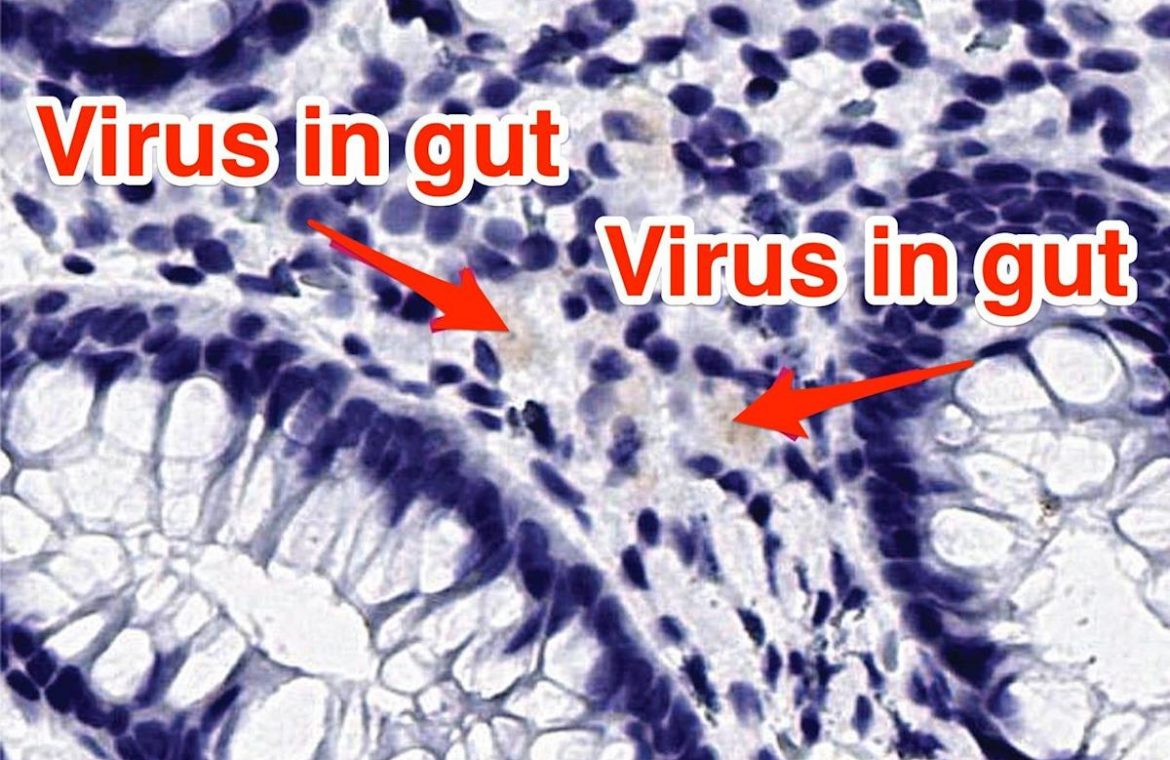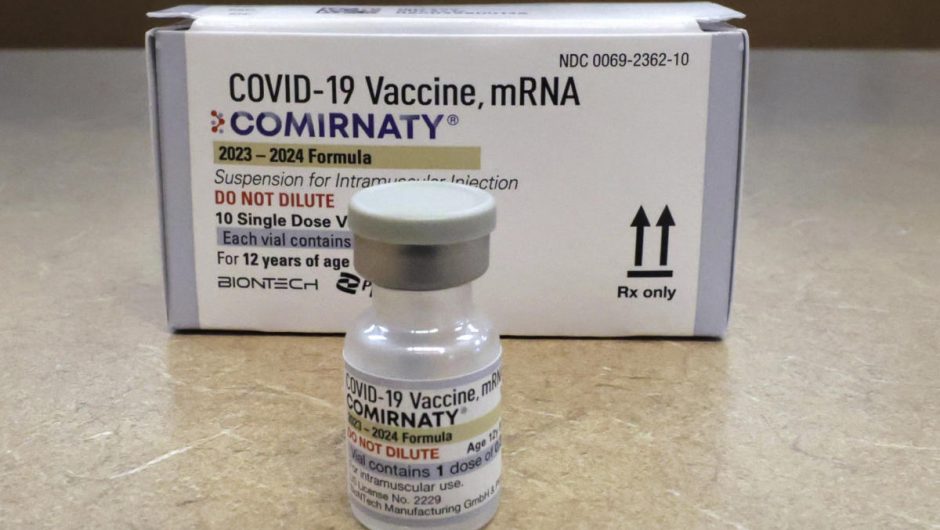[ad_1]
A slide from the girl’s biopsy reveals the coronavirus in her gut, seen here as brown shading.Dalia Arostegui et al./JPGN Reports/Insider
Scientists found signs of the coronavirus in a girl’s gut three months after infection.
The 11 year-old had been having sharp gut pain since her infection months earlier.
The case study could provide clues about long COVID, the study authors said.
Scientists found traces of the coronavirus in the gut of an 11-year-old girl, three months after she appeared to have recovered from COVID-19.
The girl had been experiencing severe abdominal pain since catching an “acute” case of COVID-19, per the study.
The findings could provide clues as to why people are experiencing symptoms long after the infection has cleared, a syndrome called “long COVID.”
It was published as part of the February issue of the peer-reviewed journal JPGN Reports.
The girl, who was being treated at the Children’s Hospital at SUNY Downstate, Brooklyn, had been experiencing “cramping or burning” pain, which got better after she went to the bathroom or ate.
The pain was intense, ranging from 5 to 7 out of 10, per the study.
It is not clear when the child got the infection, whether she had been vaccinated against COVID-19, or which variant she might have caught.
No treatment succeeded in relieving the girl’s pain. Further examination showed intense inflammation in the child’s cecum, part of the lower intestines.
The scientists made a surprising discovery when they ran biopsies on the girl, the process of taking and analyzing a live tissue sample. It found gut cells filled with traces of the coronavirus.
In the slide below, taken from the girl’s biopsy, the gut cells are shown in purple. Cells where traces of the coronavirus were detected show up as brown.
A picture of the biopsy of the girl’s gut. The arrows are pointing to brownish spots, revealing traces of the coronavirus.Dalia Arostegui et al./JPGN Reports/Insider
This could mean the body is capable of carrying the coronavirus, or at least fragments of it, for months after infection.
Given this is only one case report, it is impossible to know whether the situation is an anomaly or could be happening more widely.
The technique used in the study also does not show whether the virus is alive or dead.
Story continues
But the authors of the study say this “strongly suggests” the virus is still colonizing the gut, months after traditional COVID-19 symptoms cleared.
Another theory, espoused for instance by Yale immunobiologist Akiko Iwasaki, is that the virus was cleared earlier, but that fragments of it persist in the body for a long time.
The immune system could mistake these “ghosts” of the coronavirus for live viruses and keep mounting a strong immune reaction to try to clear them, causing local inflammation and pain.
Vaccination might be able to help clear the remnants of viruses from the body, Iwasaki hypothesized in a Twitter thread last year.
Read the original article on Business Insider
[ad_2]
Source link




